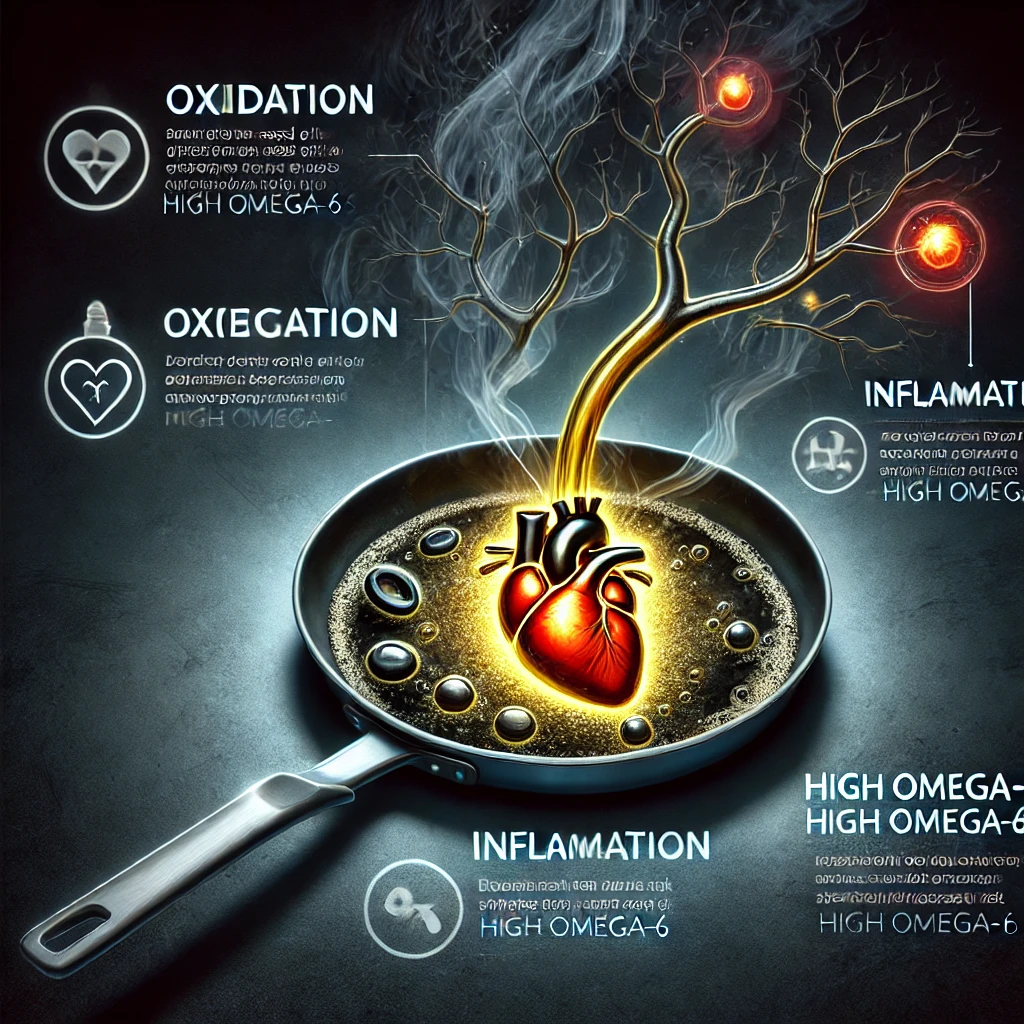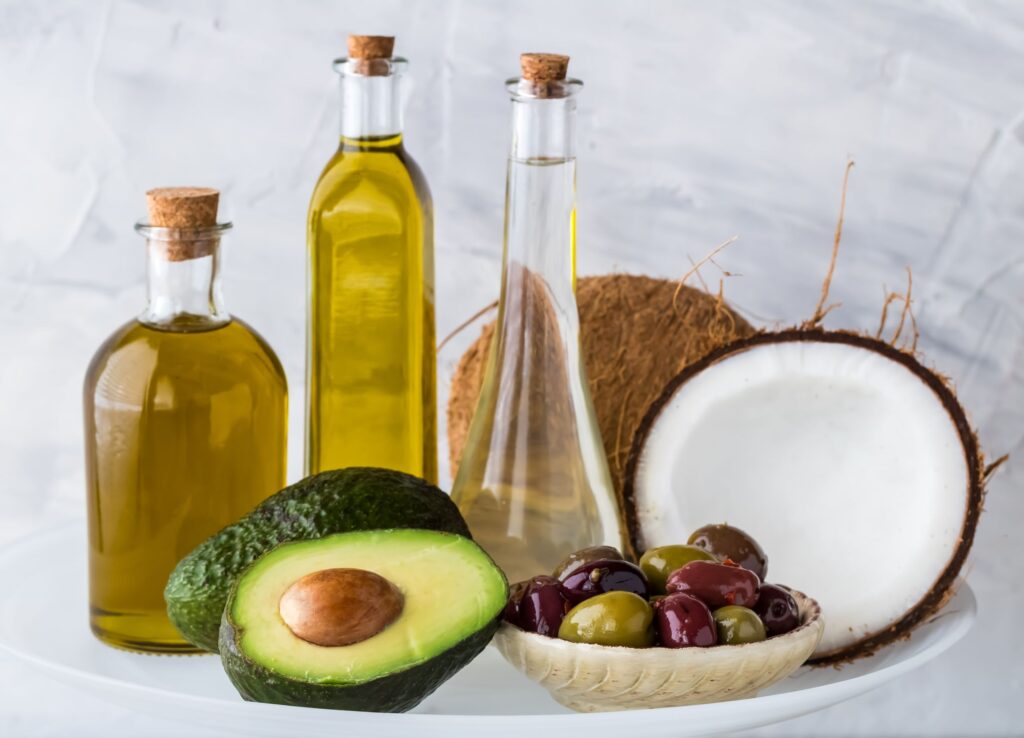My Experience with Seed Oils and Olive Oil
Introduction to my Journey
My culinary journey has always been a path of discovery. Over the years, I have experimented with various oils in my cooking, always searching for the perfect balance between health and flavor. The debate surrounding seed oils and olive oil caught my attention, and I decided to delve deeper into this topic.
Factors that Prompted Me to Compare Seed Oils and Olive Oil
I decided to compare seed oils and olive oil for a few reasons. First, I care about health. Second, I wanted to see if seed oils might have side effects that could be bad for us. I’d heard that seed oils might cause more inflammation. And, olive oil is often said to be good for our health. I wanted to find out if these claims were true.
Next, I wanted to check out the nutrients in each oil. I was curious to see how different they are when it comes to the fats, vitamins, and minerals they have. This research led me to some surprising discoveries!
| Nutrient | Olive Oil (per tbsp) | Seed Oils (per tbsp) |
|---|---|---|
| Calories | 120 | 120 |
| Total Fat (g) | 14 | 14 |
| Saturated Fat (g) | 2 | 1 |
| Monounsaturated Fat (g) | 10 | 3 |
| Polyunsaturated Fat (g) | 1 | 10 |
| Vitamin E (mg) | 1.9 | 1.1 |
Finally, I looked at how each oil tastes and how it can be used in cooking. Whether I was frying veggies or making a salad dressing, I wanted to see how each oil worked with different flavors and cooking styles. Trying them out in my own kitchen helped me understand which oil was best for what.
Are you wondering about how these oils might affect your health? Check out our article on the dangers of seed oils. My goal is to learn more and share what I find to help others. We all need to decide between seed oils and olive oil.
Uncovering the Differences: Seed Oils and Olive Oil
When you look at seed oils and olive oil, you’ll see they are very different. They have different nutrients and can affect our health in different ways.
Nutritional Content Comparison
Here is a simple way to look at the nutrition differences between seed oils and olive oil. Knowing these differences can help you pick the right oil for cooking. Here is what is in one tablespoon (about 14 grams) of each type of oil:
| Nutrient | Olive Oil | Seed Oils (average) |
|---|---|---|
| Calories | 120 | 120 |
| Total Fat | 14g | 14g |
| Saturated Fat | 2g | 1.5g |
| Polyunsaturated Fat | 1.5g | 9g |
| Monounsaturated Fat | 10g | 3g |
| Omega-3 Fatty Acids | 0.1g | 0.1g |
| Omega-6 Fatty Acids | 1g | 8g |
| Vitamin E | 10% DV | 15% DV |
Olive oil has more of a type of healthy fat called monounsaturated fat, which is good for your heart. Seed oils, on the other hand, usually have more polyunsaturated fats, especially something called Omega-6 fatty acids.
Health Implications of Consumption
Eating different types of oils can affect our health in different ways. Olive oil, especially “extra virgin” olive oil, is packed with good stuff called antioxidants, like polyphenols. These help protect your body and may lower the chance of heart disease and ease swelling in the body.

Seed oils, however, go through a lot of processing, which can take away the good nutrients and add some not-so-great things. Seed oils also have a type of fat called Omega-6, and eating too much of this can lead to more swelling and other long-term health problems. If you want to learn more about the risks, you can read our article on the side effects of seed oils.
Also, seed oils have a lot of fats that don’t hold up well when heated. Cooking with these oils at high temperatures can create harmful stuff. Olive oil, with its healthier kind of fat called monounsaturated fat, is more stable when heated and is usually a better option for cooking.
To learn more about how seed oils could impact your health, take a look at our article on seed oils and inflammation. By learning about these differences, you’ll be able to pick the best oils for your health based on what’s inside them and how they affect your body.
Making Informed Choices When Choosing Seed Oils and Olive Oil
Figuring out seed oils and olive oil means knowing how different ways of cooking can change these oils. It’s about finding a mix of good taste and health benefits.
Understanding Cooking Methods
Cooking can change how healthy oils are and how they taste. When I tried cooking with different oils, I found that some work better in certain ways than others. Here’s what I learned:
| Cooking Method | Seed Oils | Olive Oil |
|---|---|---|
| Sautéing | Moderate effectiveness | High effectiveness |
| Frying | High stability | Moderate stability |
| Baking | High stability | High stability |
| Salad Dressings | Not ideal | Excellent |
Cooking with olive oil adds a rich flavor and keeps its healthy nutrients. But when I tried frying at really high temperatures, seed oils lasted longer without starting to smoke. For baking, both oils kept their good stuff, but when using oil on cold foods, like salads, olive oil always made the flavor taste better.
Balancing Flavor and Health Benefits
Choosing the right oils for cooking can really make a difference in both taste and health. On my cooking journey, I learned how each oil changed the flavor of my food and how it affected my health.
For example, olive oil has a strong taste that’s perfect for Mediterranean dishes like salads and pasta. It’s packed with healthy stuff, like antioxidants and good fats. Seed oils, on the other hand, have a lighter taste, so they don’t change the flavor of food as much. They’re also better for high-heat cooking, like frying, because they stay stable and don’t burn as easily.
Knowing when to use each type of oil helps me make food that’s both tasty and good for me. Olive oil is great when I want big flavor and extra health benefits, while seed oils work well for cooking at high temperatures without changing the taste of the dish.

Knowing how seed oils affect our health is important. I’ve written more about the possible risks of using seed oils and how they can cause inflammation in the body.
By trying out different ways to cook and mixing tasty flavors with healthy choices, I’ve changed my cooking style to make my food both yummy and better for me. If you want to learn more about how seed oils might affect you, check out more on seed oil side effects.
Personal Reflections and Recommendations on Seed Oils and Olive Oil
Adjusting My Cooking Habits
On my journey to learn about seed oils and olive oil, I started thinking about changing how I cook. Once I learned about the different nutrients and possible health effects, I realized that making a few small changes could be really helpful. I began by swapping seed oils, like soybean and corn oil, for olive oil in most of my recipes.
Olive oil, especially extra virgin, not only had better nutrients but also gave my food a richer taste. It’s packed with healthy fats called monounsaturated fats and antioxidants like polyphenols, which are great for heart health. If you want to know more about why seed oils might not be the best choice, you can check out are seed oils bad for you.
| Cooking Method | Old Habit (Seed Oils) | New Habit (Olive Oil) |
|---|---|---|
| Frying | Canola Oil | Olive Oil |
| Baking | Sunflower Oil | Olive Oil |
| Dressings | Soybean Oil | Extra Virgin Olive Oil |
Advocating for Healthier Oil Choices
Thinking about my experience, I learned how important it is to choose healthier oils. Not only for me but also for my friends and family. Switching to olive oil made me feel a lot better. I had more energy and felt less heavy or bloated after eating.

Talking to others about these changes led to some really interesting conversations about the bad sides of seed oils. We often ended up discussing how seed oils can cause inflammation and other side effects. This made me realize how important it is to help people learn more about them. When I shared why I prefer olive oil, many of my friends started to rethink which oils they use for cooking.
I’ve learned that making food taste good and keeping it healthy is really important to me. Olive oil helps me do that! It’s great for lots of things, like cooking vegetables or making salads taste better. I also enjoy trying new recipes because olive oil has a special flavor that goes well with many different foods.
| Factor | Seed Oils | Olive Oil |
|---|---|---|
| Fat Content | Polyunsaturated | Monounsaturated |
| Cooking Versatility | High Smoke Point Required | Moderate Smoke Point Sufficient |
| Health Impact | Potential Inflammatory Effects | Anti-inflammatory Properties |
My journey has shown me that making changes to my daily habits made a big difference in my health over time. By sharing my story, I hope to show more people how the oils they use can affect their health. I want to inspire them to try healthier options!
Take Better Care of Yourself:
Get healthy! Start with things we all know we should do. Aim to walk 5,000 steps or more each day—10,000 steps, and you’ll feel even better! Try to walk outside so you can enjoy direct sunlight.
Sunlight is important. It helps keep us healthy, so get outside and soak up some rays! But remember, sunglasses can block some of this sunlight, which our brains and senses need.
Eat better. Pay attention to how much grain you eat, and make sure to get enough protein. Red meat can actually be good for you, and people who eat less of it are often getting sicker. Don’t be afraid of salt either—it’s important too. Check out our grass fed beef page.
Learn about Biohacking for Health. Some companies spend a lot of time and money making foods that are hard to stop eating. Biohacking can help us make better choices and avoid foods we might be too used to.
Making changes is not easy. Many of us are used to eating things like seed oils and sugar, which can be addictive. Start by making small changes, one at a time, and soon you’ll be on a path to better health. For more information on getting healthy, check out our page on Alkaline Living!

